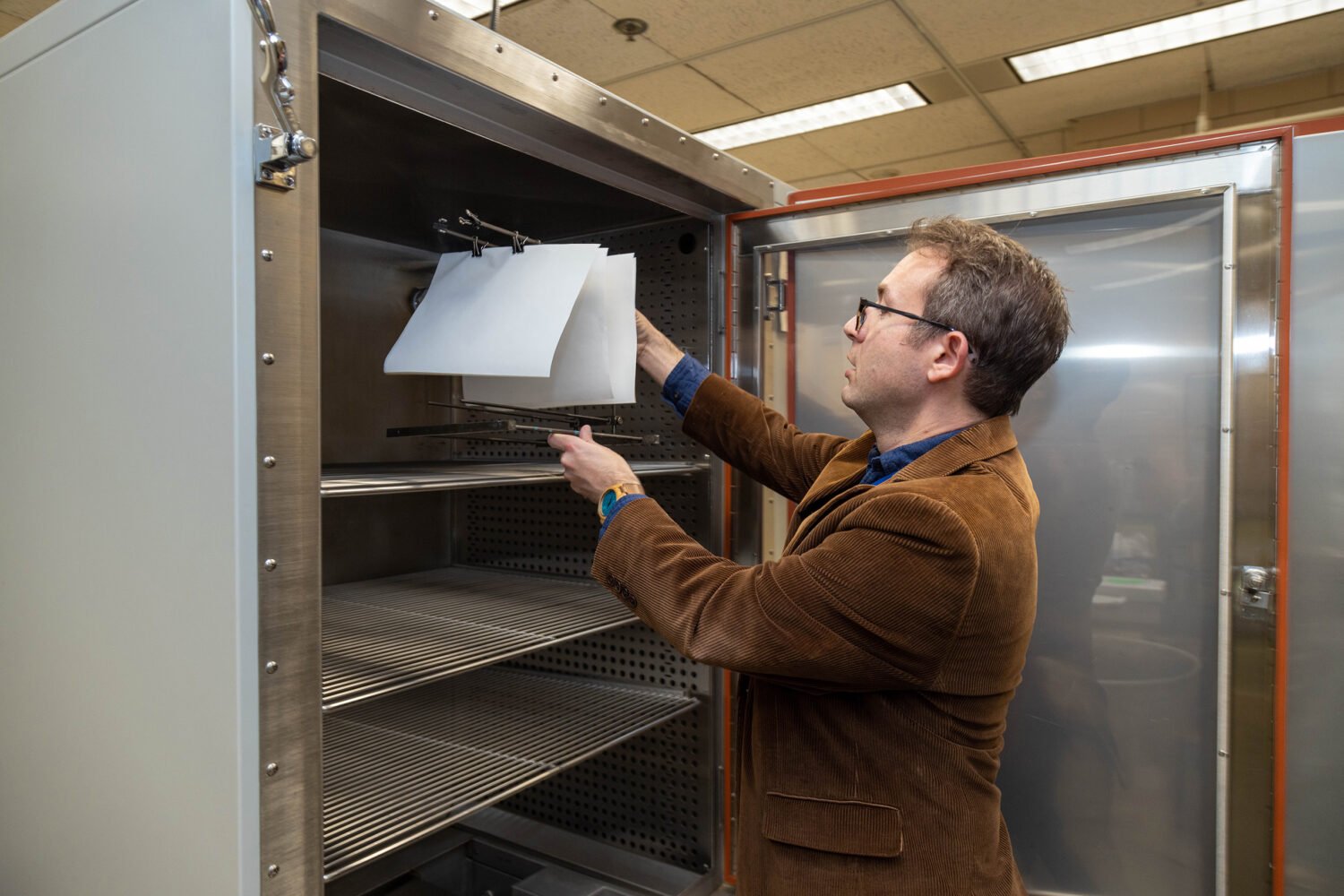Drama in the White House briefing room still feels like events on another planet to me. I like to rubberneck as much as the next guy, but I’ve yet to see a story from that crucible’s confines that could hold my attention for more than a minute, or feel like it might actually affect my life. Still, it’s the end of December, and I’ll be damned if I’m not going to end the year with a list! Herewith a highly subjective collection of stories I found interesting about media organizations in the DC area in 2017, many of which I’m going to keep an eye on next year, too.
The Washington Post becomes self-sufficient
Even as its revenues cratered in the first decade of the 2000s, the Washington Post was part of a publicly traded corporation whose other businesses effectively subsidized its newsgathering efforts. The Post could have become a pity project under Jeff Bezos, but instead it’s methodically tried to build new sources of revenue beyond subscriptions. It’s licensed its Arc publishing platform to other newsrooms and rolled out product after money-making product from its ad technology “skunkworks.” The Post now says it’s profitable (though it won’t release numbers). The lesson for other news orgs pining for a well-heeled owner: Don’t assume a rich guy’s benevolence will last. Find a way to pay your own freight.
Politico gets its groove back
At the beginning of this year, you could have made an argument that Politico’s biggest contribution to coverage of the election and the new administration was the reporters who left it to work elsewhere. But over the course of the year, Carrie Budoff Brown’s publication has published some of the year’s most indispensible (and readable) stories, so many that I had a lot of trouble picking highlights. My short list includes Rachana Pradhan and Dan Diamond’s investigation of Tom Price’s travel habits, Tim Alberta’s profile of John Boehner in winter, and pretty much everything Annie Karni wrote. Plus the way its Women Rule initiative filled my Twitter feed is a good reminder the company has a popping events business as well.
Shitty media men
The New York Times didn’t fire Glenn Thrush after investigating a Vox report on what it alleged was bad behavior mostly when he was at Politico. But lots of other DC-area or DC-adjacent journalists forfeited their platforms following similar accusations: Ryan Lizza, Mark Halperin, Mike Oreskes, Adrian Carrasquillo. Few flamed out leaving as much ash as Leon Wieseltier, whose behavior at the New Republic was well-known to women employees but evidently a mystery to most men who worked there. Laurene Powell Jobs’s Emerson Collective pulped the first issue of his new magazine and the Atlantic severed ties with him, as did the Brookings Institution.
HuffPost’s DC bureau remains in limbo
HuffPost’s DC bureau was for years an island of stability and calm while Arianna Huffington barraged the publication’s New York HQ with half-baked initiatives and here-today-gone-tomorrow editors. That changed when she left the company and new Editor-in-Chief Lydia Polgreen tried to tame the bureau, aiming to change its structure from a bunch of reporter-editors who more or less did what they wanted to a more traditional outpost with an editor who fits neatly into the mothership’s org chart. Someone who might have overseen that role, Jim Rich, lasted only a few months as executive editor, but the serious story-shaping abilities of Gawker Media vet Tommy Craggs and Matt Fuller’s reporting on Congress give me some hope that the DC office can once again become a high-functioning pirate ship.
DCist closes
Billionaire owner Tom Ricketts yanked DCist’s plug after workers in the New York office of Gothamist and DNAinfo voted to unionize. He reversed his cowardly decision to nuke the publication’s archives, but the damage to local news was nonetheless immense. DCist was one of the most valuable members of the DC-area news ecosystem and leaves behind a bereft community that had internalized the rhythms of its coverage. It’s also a reminder to journalists pining for a savior that rich owners can shut a publication as easily as they can pour resources into it.
James O’Keefe tries to sting the Post, steps on a rake
The Washington Post’s newsroom had already had a stellar year when Jaime T. Phillips approached reporters there claiming that Alabama Senate candidate Roy Moore impregnated her as a teenager. Phillips was, in reality, an undercover operative for conservative media provocateur/apparent Wile E. Coyote disciple James O’Keefe’s Project Veritas, which hoped to sting the Post after it published other allegations of Moore’s predatory behavior toward young women. Unfortunately for O’Keefe, the Post vetted Phillips’s claims while reporter Stephanie McCrummen slow-roasted her alive in a Veritas-style hidden-camera interview that every working and aspiring journalist should watch 100 times for pointers. O’Keefe kept trying to blow up the Post with his Acme catalog products, promising other big revelations from his “investigation” (note how prominently his videos tend to display a “donate” link; O’Keefe drew a $235,471 salary from Veritas in 2015, according to an IRS filing) and made a complete ass of himself in a follow-up video interview.
The Daily Beast howls
The weird progress of the Daily Beast, from Tina Brown brainchild to being shackled in a barrel to Newsweek as it approached the falls, to once-again independent White House scoop machine, has been exhilarating to watch. (Did I say I don’t care about the briefing room? Maybe I do.) I can’t wait for the next stories from document-hound Lachlan Markay—the Washington Free Beacon should have held his dog hostage so he couldn’t leave—White House reporter Asawin Suebsaeng, or political reporter Betsy Woodruff.
Axios gets bigger
Jim VandeHei’s post-Politico news organization raised $20 million more this fall and plans to expand its staff from 89 to 150, leading all DC media watchers to an important question: Axios has 89 employees? In all seriousness, despite some notable scoops, if you interact with Axios, your on-ramp is likely Mike Allen’s morning newsletter, a very enjoyable, breezier version of Playbook that breaks down stories with busy-person-friendly subheds like “Be smart” and “Why it matters.” So what do the other 88 people do? They’re helping build audience, VandeHei told the Wall Street Journal, promising a paywall sometime late next year. I’ll take his word on it for now, but honestly my most indelible memory of Axios’ 2017 is learning a wall in its Clarendon HQ is festooned with a sign that says “Suck rolls downhill.”
Laurene Powell Jobs moves deeper into DC media
When David Bradley bought the Atlantic Monthly in 1999 it was unprofitable and, perhaps even worse, based in Boston. “Morale was down,” an executive at its former owner’s company told the New York Times at the time, “because upper management had let it drift like an orphan.” Bradley bought it an anchor. Eighteen years later, the now DC-based Atlantic says it’s profitable, with revenue coming in from digital efforts, a consulting business, and an events division. Bradley said in March he hoped to find a buyer for that part of his media business and in July said he’d found just the person: Laurene Powell Jobs, whose Emerson Collective has, like Bradley, also invested in Axios. Bradley will keep National Journal, which is sort of hard to describe these days but more a research and data analytics firm than a journalism outfit, Government Executive, and Quartz. Powell Jobs has also purchased a stake in Monumental Sports & Entertainment but doesn’t yet own a home in DC–will that change in the new year? She will definitely own one (virtual) wall here: The Atlantic plans a paywall in January.
WAMU’s listenership goes up, including in one unexpected way
Last spring I noticed something interesting about WAMU’s rising listenership: the number of African-American and Latino listeners was up by a lot. That shouldn’t be unusual in a diverse place like the Washington region, but public radio’s audience is typically whiter than the front row at a Luke Bryan concert. At the time, WAMU wasn’t sure exactly what it was doing right, but it seemed likely that the presence of Editorial Director Alicia Montgomery played some part. She left the station for a big NPR job this fall. Will the trajectory continue without her?
Washington City Paper gets a new owner
To be honest, I wasn’t optimistic that my old employer would be much of a story in 2018. It was losing money and for sale, and its most recent set of out-of-town owners announced a 40 percent pay cut for staffers just before Christmas. Enter DC rich guy Mark Ein, who paid just $50,000 for the troubled alt-weekly and made the season bright again for its hard-working employees. Ein told me he views the paper as a “community investment,” not necessarily a money-maker, but he wants to drive it toward financial self-sufficiency. Will that be possible with Editor Alexa Mills’s vision of the paper as DC’s hometown newspaper, picking up the slack she believes the Post is leaving with its Metro reporting? I guess we’ll see! More troublesome is Ein’s creation of a “Friends of Washington City Paper” council, which includes some of DC’s biggest machers in food, arts, sports, and PR. Ein says they’ll have no say in City Paper’s journalism, but I’ll bet I’m not the only media reporter who plans to keep a close eye on those adjacencies.



















